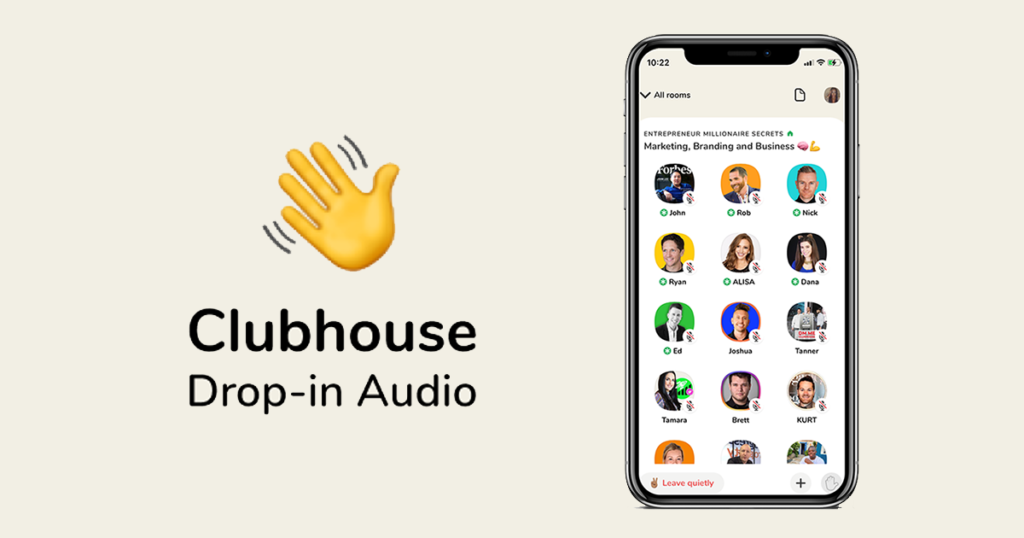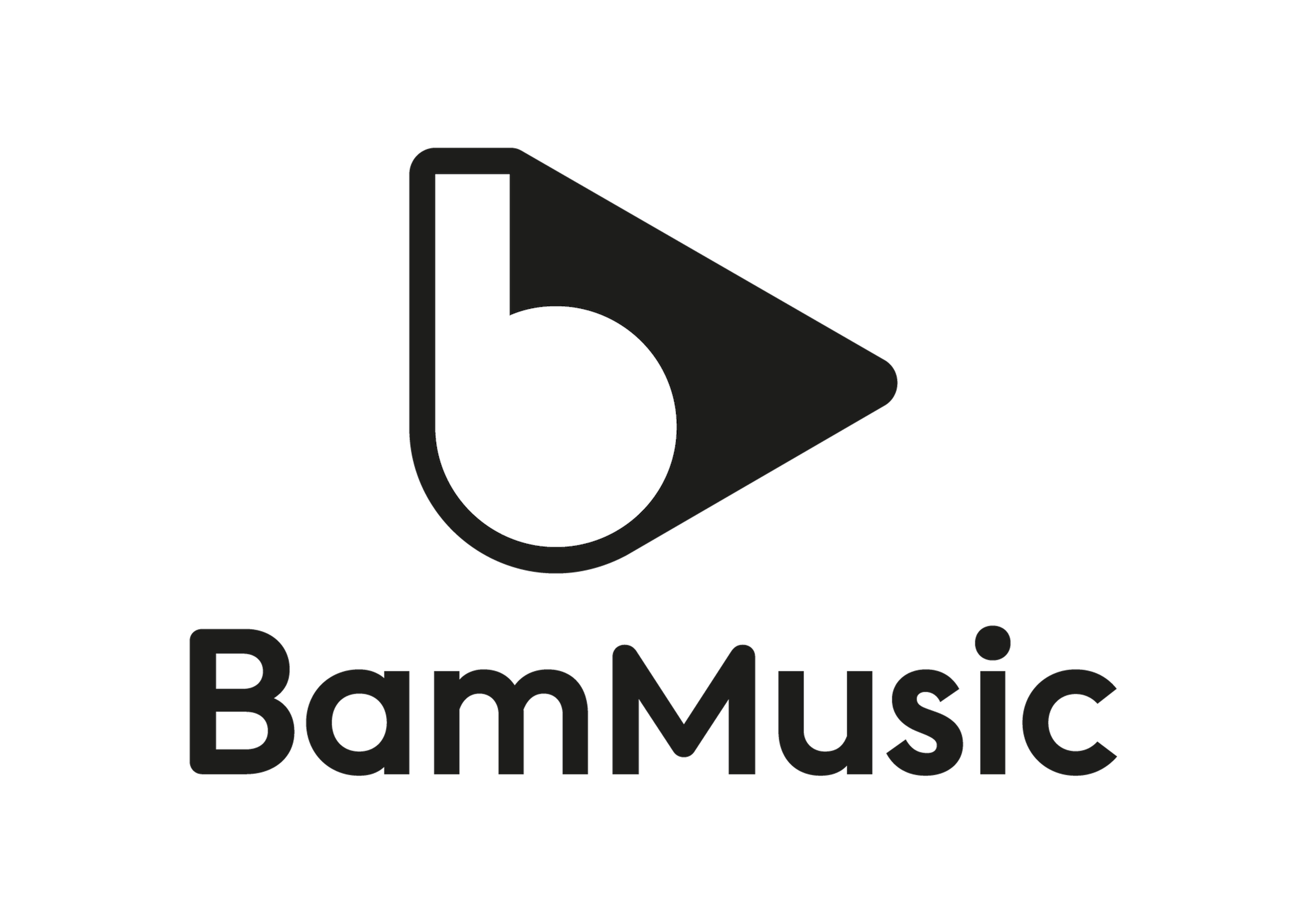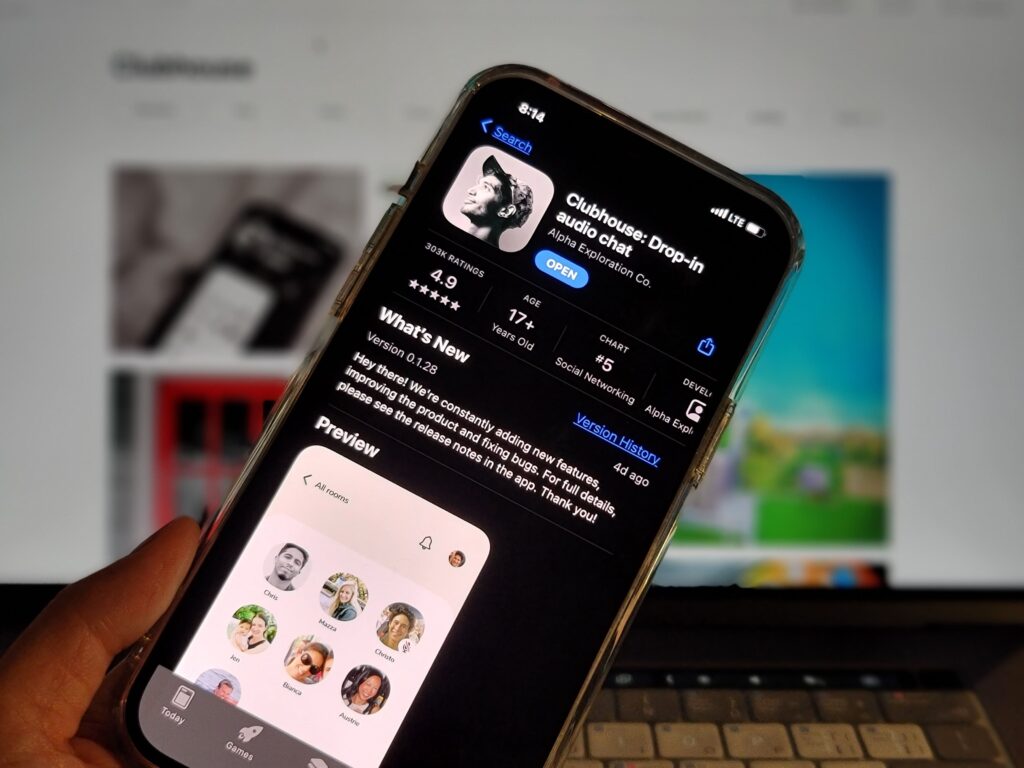One could say that everything related to social media started one cold morning back in 2004. The day that Facebook first appeared. From there, the interconnected world of social networks started to evolve year after year. Twitter, Instagram, Snapchat, Tiktok – one after the other, new networks started to emerge. With each bringing its own added value and its own culture. Every single time we thought we had seen everything there was to social media, a new bubble where users could freely share between them would suddenly appear. But with every new addition, we took notice of something similar between them. They all relied immensely on visual content. For years, these formats were king and queen of social media. Until now. The year 2020, with its pandemic, and the digital switch and social isolation that emerged from it, created the perfect setting for the advent of Audio Social Media.
The talk of the town
Like mentioned before, 2020 really gave audio social media the kick it needed to grow. With everything done online, a form of weariness of “traditional” social networks and screens was developed. Who didn’t think about blowing their brains out if they had to look at their phone or computer for one more minute, right? Everything was feeling void, we were lacking intimacy and real human interaction. We needed something that kept us both connected and as far away as possible from a screen. That’s when we turned to the almighty audio formats for help. They rapidly became a hot topic and everyone wanted to get involved. Don’t get us wrong, a book was just as good an option but unfortunately, it’s not the topic of this article. Maybe next time.
New or Newer?

Audio formats are in no way something revolutionary or new. Most users from WhatsApp or WeChat had already embraced voice messaging as a quick and personal way to communicate – even if we all have that one friend that hates voice notes. Audiobooks have also been around for some time, with Audible steadily gaining traction.
In addition, podcasts as a whole had been enjoying growing success for several years now. Particularly with the rise of the Spotify, Deezer, and Apple Music streaming platforms that centralized most of the emerging audio content. We also must include the popular ASMR videos that had been helping thousands of people relax and sleep since they first trended. All these formats were already established and working pretty well before the pandemic. The beauty of being able to listen to them passively while doing something else is truly what attracted most users. Add to that the intimacy of audio content and you have the perfect survival kit for the pandemic.
Because, yes, audio is the most intimate type of content, and the reason why is pretty simple. There is nothing more intimate than hearing someone talking directly into your ear. And we’re not talking about the weirdos that listen to audio on speakers. We’re talking about the elite that uses headphones to keep it nice and close. But you might be wondering, if audio formats are not new, why are you talking about the advent of audio social media? We’re glad you asked.
Same same, but different
The big difference between these already existing audio formats and what piqued everyone’s interest recently is that these new social platforms are using formulas extracted from “Gen-Z 101”. Using the intimacy of the audio format as a starting point, two distinct ways of sharing have emerged.
Closer than ever
The first formula uses audio to make us connect more with either our close ones or with strangers, depending on the app, through our voices. Representing this category we find Cappuccino and Swell.

The premise of Cappuccino is that we all listen to podcasts, so why not listen to a short podcast made by our friends especially for us. In these times where we need to reconnect with people, it allows you to send a bean, as they call it. This bean is a recording of your friend talking about what’s on their mind for a couple of minutes. The next morning, group members receive a notification saying that your morning cappuccino has been brewed. The only thing left is to enjoy an intimate moment listening to whatever that person wanted to share with you.

On the other hand, Swell is a voice-based social platform where every post is up to 5 min of audio content that can have links and photos. Here you can also form groups where you only talk with your friends but on top of that, you can also participate or create an open Swellcast. This allows you to talk with strangers and have deep audio conversations. They base their app on the contrary of missing out. You start a conversation whenever you want to or listen at your convenience. Plus, you can always catch up with what you missed and continue a conversation at any time.
We only used two examples but they’re enough to illustrate how audio-based platforms can be used to bring people together and allow them to share intimate content. They certainly fit the profile when talking about the advent of audio social media.
The “You had to be there” gang
In this second category, we find another formula that is not better or worse, just very different. By mixing the FOMO present in younger generations with live audio content, they’ve created a space where you can exchange with others – but only if you’re there.

First on the list is up-and-coming social media platform Clubhouse. This buzzy, invite-only app debuted last spring and earned quite the reputation for its talk-show-like twist on the chat rooms. It gained popularity thanks to Silicon Valley stars such as Mark Zuckerberg and Elon Musk but also Oprah Winfrey. Like we said before, it is strongly based on leaving users with the fear of missing out. Once the conversation is over, the room is closed, and the live audio chats are gone. Forever. Its exclusive feel, wide variety of events featuring celebrities, and unique features have propelled its growth and it now holds over 10 million users.

Not so far behind we have the veteran app Discord. Discord gained an early foothold among gamers when it was first launched in 2015. They needed a way to strategize – or trash-talk, we all know how that goes – with other players while keeping both hands on their controller. But with the rise of the likes of Clubhouse, they saw the opportunity to rebrand their product and are now working towards making it a place for any type of audio socialization.
As for the product in itself, within Discord, you are able to join public voice-chat rooms or create your own. Each server also has a text function where you can send links, images, or anything you want to share. In addition, thanks to their years on the market, they already have different bot features you can add to your rooms. These features can help you with moderation but also make your server more lively and interesting.
The future of social media is social audio
These four apps are just a fraction of everything that is happening with audio social media platforms. But they really show us how this craving for audio-first socialization is shaping the way we consume content on social media. And where there are consumers, there are very smart marketers ready to use these new means.
Just like what could be done on the radio several decades ago, brands are exploring new ways to use these social audio tools based on voice. They are readapting it with modern tools to reach new populations and respond to more contemporary demands and uses. As an example, Unsplash is using Clubhouse to stay close to their community already. Gaming brands have created their own chat rooms on Discord to talk about their products or upcoming updates. And we could go on. All that thanks to the fact that social audio offers many advantages. There is proximity, optimal targeting, and guaranteed message distribution. You can neither block a voice ad nor skip it like on a video. Maybe video didn’t kill the radio star after all.
Not all perks
But of course, we can’t say there’s only good coming out of audio social media. The big problem with user-generated content on these platforms is that it is very hard to moderate. Normally, platforms rely on a combination of machine learning, user reports, and contracted moderation teams to distribute the enormous task of moderating a social network with millions of users. But audio, as a format, may pose new challenges. How and when to censor what people say is really hard. Especially with the live-audio apps like Discord or Clubhouse. On apps following more the Cappuccino or Swell model, where the audio stays recorded, it is easier to report. But what can you do when someone starts harassing another person or racist conversations emerge in a live format? Not much.
A new wave for content creators
Yes, social audio has a dark side. But let’s end on a happy note if you don’t mind. Users and brands alike are adopting the different models of social audio. But what exactly does it mean for content creators? Well, content creation has always been a path filled with a substantial amount of effort and hard work. You need material, hours of editing, and many takes to create something you want to share with the community. Even if you choose to go for a live type of content like Twitch, the initial investment can be overwhelming.
With the arrival of Clubhouse, authenticity and simplicity are being pushed as core values for this new age of audio social media. The lack of visual content makes these platforms riveting for creators who have the talent but never felt confident enough in front of a camera. This audio-centric social media platform enables them to showcase the talent that they have probably repressed till now and connect with an audience by just being themselves.
Monetize the effort
Since Clubhouse users create a variety of content, from interviews to shows, they decided to launch a method for them to monetize it. In a similar way to the donations system of Twitch, users will be able to send money directly to the creators while engaging with them. Clubhouse has also made it very clear not to want the usage of advertisements on the platform. Instead, creators can be invited as special guests in a brand-sponsored room or develop a long-term partnership where they will have to introduce the brands into their organic discussions and usual content. But always mentioning the sponsorship verbally first in order to keep the transparency and authenticity of course.
In short
Audio social networks seem to offer something that traditional social media cannot. This intimate and close feel we all have been missing over the past year of the pandemic. Some more than others of course. But I think we can all agree that this audio market is growing and is here to stay. Whatever the format might be, brands and content creators alike have to seize the trend and start engaging their communities.
If you are thinking about surfing the trend and starting your own podcast, check out our article on How to grow your podcast audience in 2021 for a few tips that will get you started. Over and out!







